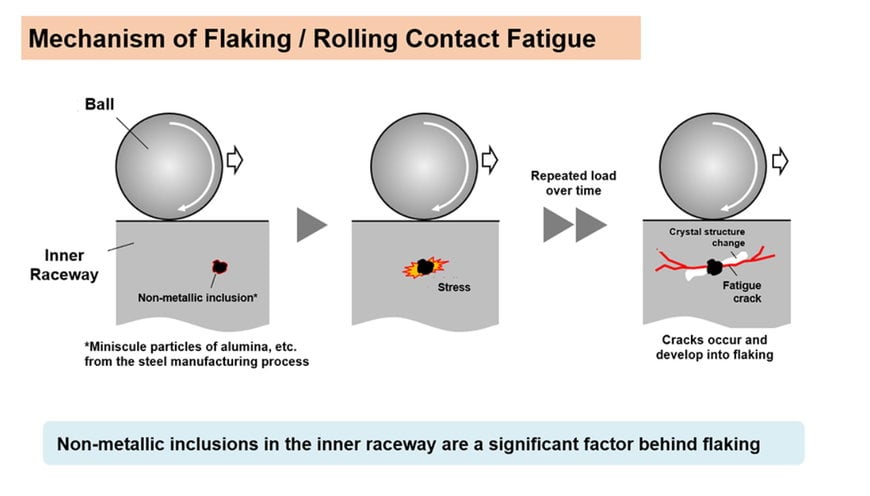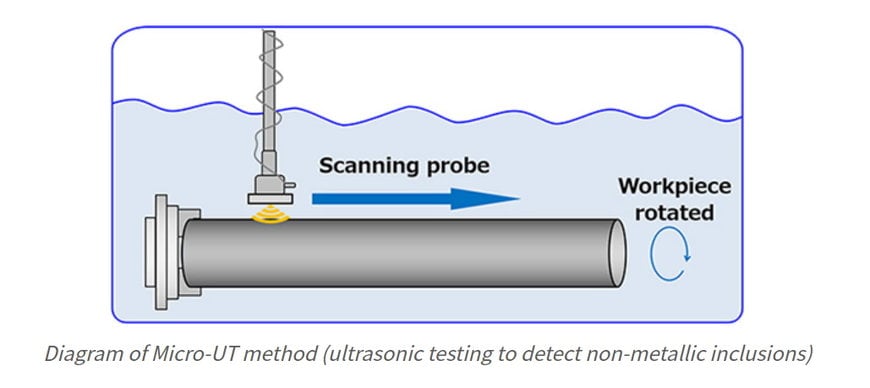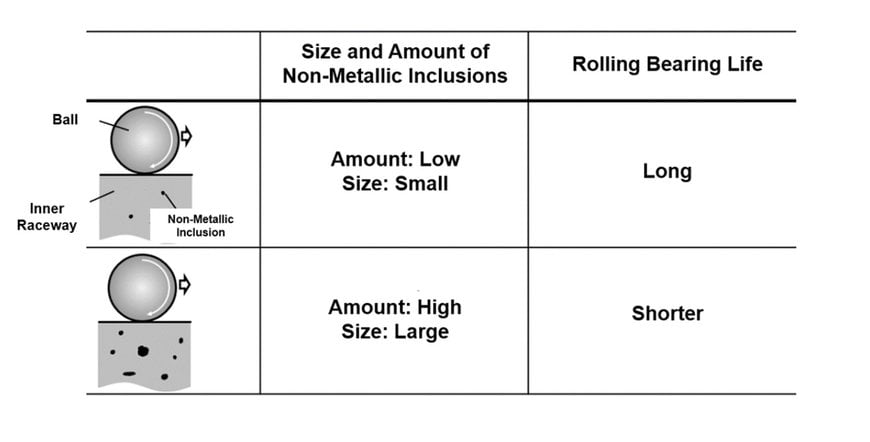www.industryemea.com
22
'24
Written on Modified on
World first: ultrasonic testing provides highly accurate bearing life predictions
After years of research and development, NSK is revising the basic dynamic load rating of many bearings by up to double the equivalent rolling contact fatigue life (with no change in design or materials).

Non-metallic inclusions in the inner raceways are a significant factor behind flaking
NSK is the first company in 60 years to make a significant breakthrough in bearing life calculation techniques, helping end users to improve productivity and boost environmental protection.
Some engineers may be surprised to learn that the fundamental formulas used to calculate bearing life are more or less the same as those defined in a 1962 report by the International Federation of the National Standardizing Associations (ISA), the precursor to the International Organization for Standardization (ISO). In 2023, over six decades later, NSK has learned a few more things about calculating and predicting bearing life, making it time to reconsider the evaluation techniques for this critical parameter.
The project began around 20 years ago, when NSK noticed a growing gap between the bearing life calculated in the ISO standard and the actual bearing life verified by endurance testing. A more detailed study commenced.
At that time, NSK confirmed that the life of its bearings was approximately 20 times longer than the life expected under ISO standards. And today, in 2024, the life of NSK bearings can be more than 50 times longer. Erring on the side of caution is fine, but longer bearing life is beneficial to improve production efficiency and protect the environment by reducing the frequency of replacement and quantity of waste.

NSK research demonstrated that, under well-lubricated conditions, the composition and quality (amount of impurities) of the bearing steel is a more accurate indicator in predicting how long a bearing will last. However, as the company continued its research, engineers realised that an evaluation method based on fracture mechanics might provide more meaningful insight.
Technology development commenced via an open innovation project between NSK and Kyushu University. The result was the establishment of a quantitative evaluation method that could determine which factors influenced the process of crack propagation in a material, and to what extent. Notably, by combining the new method with an ultrasonic inspection technique that scans the non-metallic inclusions in a large volume of steel, NSK discovered it could predict the life of its bearings with much higher accuracy.

The size and amount of non-metallic inclusions helps predict the life of rolling bearings
With the establishment of the Micro-UT ultrasonic inspection method, it is today possible to inspect more than 3,000 times the volume of steel compared with conventional microscope methods in just 20% of the time. NSK already has these innovative testing systems in place at its Technology Centres around the world.
The company’s current catalogue contains a very large number of bearing types, and the applications and conditions of use by customers are also diverse. In order to ensure that customers can use NSK bearings with confidence, the company is reviewing the basic dynamic load ratings in consideration of an appropriate safety margin. Customers can rest assured that the updating process will take place based on well-researched methodology supported by extensive empirical data. Any uprated values will be well within the safe range.
www.nsk.com

